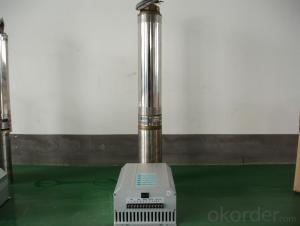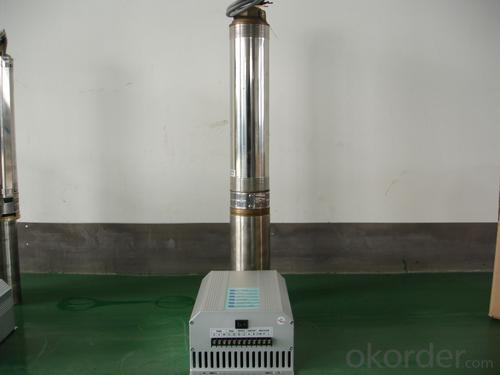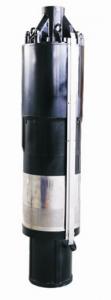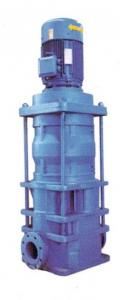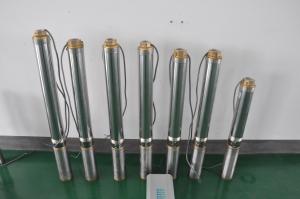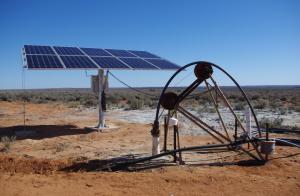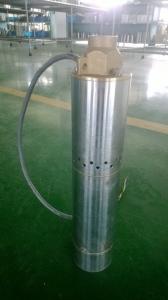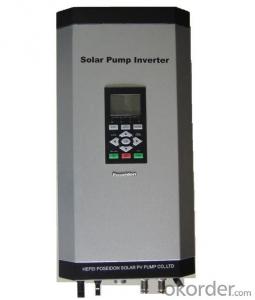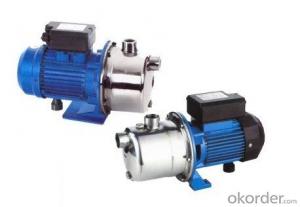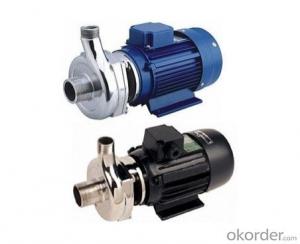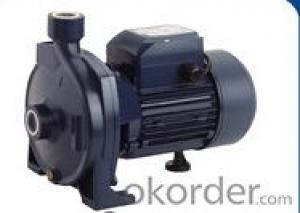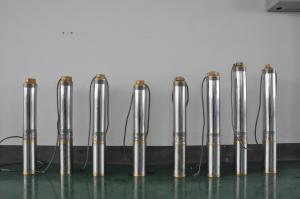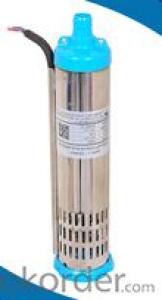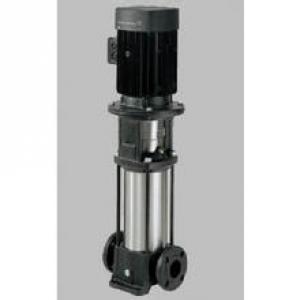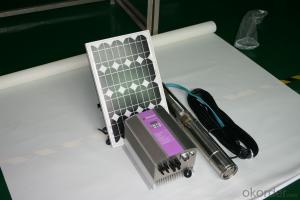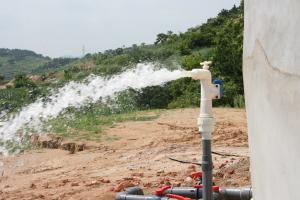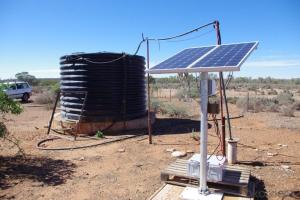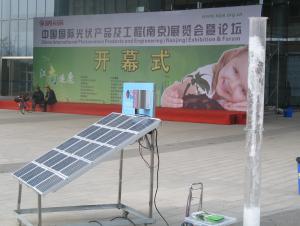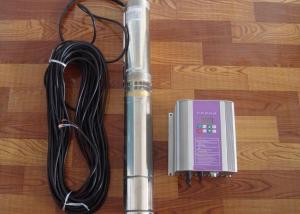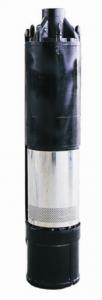Small Solar Water Pump
- Loading Port:
- China Main Port
- Payment Terms:
- TT OR LC
- Min Order Qty:
- -
- Supply Capability:
- -
OKorder Service Pledge
OKorder Financial Service
You Might Also Like
Item Description :
This superb new addition to our solar fountain range comes with a 10w solar panel,and a powerful fountain pump that is capable of producing fountains of up to 2m in height. As well as being easy to set up and use.Instruction manual is supplied for assembly and maintenance.
Solar Fountain Key Features :
Powered by direct sunlight
No high voltage electric mains required
Safe for children
Max. height of fountain: 2M
Max. flow capacity: 800 L/H(176 GAL)
10W Polycrystalline solar panel included
18V DC brushless pump
Solar Pump Features :
Can produce fountains up to : 2M (tube height) 1.4M (fountain height)
Comes with multiple nozzle accessories
Cable Length : 5M
Solar Panel Features :
10W peak power.
Polycrystalline highly efficient solar panel
Comes mounted in aluminium frame
Comes with ground stake and rotating knob so you can angle your panel toward the sun
What You Will Get :
10W solar panel
Solar pump
Ground Sake
Nozzle accessories
Precautions :
DO NOT alter or change the product itself or its components
Operate pump in freshwater only, never above 50 degrees celsius
Keep away from flammable liquids
Do not connect to any other power supply other than the included
- Q: Can a solar pump be used for water supply in vineyards?
- Yes, a solar pump can be used for water supply in vineyards. Solar pumps are a sustainable and efficient option that can harness energy from the sun to power the pump and provide water for irrigation in vineyards. This reduces the reliance on electricity or fuel-powered pumps, making it a cost-effective and environmentally friendly solution.
- Q: Can a solar pump be used for water supply in hospitals or medical facilities?
- Hospitals and medical facilities can utilize solar pumps for water supply. These pumps are powered by solar energy, making them an efficient and sustainable option. They can be installed in areas where electricity supply is unreliable or unavailable, ensuring a constant water supply for various medical needs. Solar pumps have the ability to extract water from wells, boreholes, or other water sources and transfer it to storage tanks or directly to the required areas within the hospital or medical facility. They can be used for tasks such as providing drinking water, maintaining sanitation, facilitating cleaning, and sterilizing medical equipment. The use of solar pumps in hospitals and medical facilities offers several advantages. Firstly, it reduces dependency on grid electricity, resulting in cost savings and a more dependable water supply. Additionally, solar energy is a clean and renewable source, contributing to a greener and more sustainable healthcare system. Furthermore, solar pumps require minimal maintenance and have a long lifespan, making them an excellent choice for continuous water supply in critical medical environments. They can be easily installed and seamlessly integrated with existing water supply systems, ensuring a smooth transition to solar-powered water supply. In conclusion, solar pumps are an effective solution for water supply in hospitals and medical facilities, providing a reliable, cost-effective, and sustainable option to meet the water needs of patients, healthcare professionals, and medical equipment.
- Q: What is the efficiency of a solar pump at different solar radiation levels?
- The efficiency of a solar pump can vary at different solar radiation levels. Generally, a solar pump's efficiency increases as the solar radiation levels increase. This is because higher solar radiation levels provide more energy for the solar panels to convert into electricity, resulting in a more efficient operation of the pump. Conversely, at lower solar radiation levels, the pump's efficiency may decrease as there is less energy available to power the pump. However, it is important to note that the specific efficiency of a solar pump at different solar radiation levels can also depend on various factors such as the design of the pump, the quality of the solar panels, and the overall system setup.
- Q: How long does it take for a solar pump to pay for itself through energy savings?
- The payback period for a solar pump can vary depending on several factors such as the cost of the pump, the amount of energy savings achieved, and the local energy rates. On average, a solar pump can pay for itself in 3 to 7 years through energy savings. Solar pumps are an energy-efficient alternative to traditional pumps that rely on fossil fuels or grid electricity. They utilize solar panels to convert sunlight into electricity, eliminating the need for ongoing fuel costs or grid electricity consumption. This results in significant energy savings over time. To calculate the payback period for a solar pump, it is necessary to consider the initial investment cost and the ongoing energy savings. The initial cost typically includes the price of the pump itself, installation, and any additional components such as solar panels and batteries. Energy savings are determined by comparing the pump's energy consumption to that of a traditional pump. Once the initial investment cost and energy savings are determined, the payback period can be calculated by dividing the initial cost by the annual energy savings. For example, if the initial cost is $10,000 and the annual energy savings amount to $2,000, the payback period would be 5 years ($10,000/$2,000). It is important to note that the payback period can be influenced by various factors. These include the geographical location, the size and efficiency of the solar pump system, the amount of sunlight available, and the specific energy rates in the area. Additionally, any government incentives or grants for solar installations can significantly reduce the payback period. Overall, investing in a solar pump can provide long-term financial benefits through energy savings. While the payback period may vary, the environmental benefits and reduced reliance on non-renewable energy sources make solar pumps a sustainable and cost-effective choice in the long run.
- Q: How does the size of the solar pump controller affect its performance?
- The size of the solar pump controller does not directly affect its performance. The performance of the solar pump controller depends on its technical specifications, efficiency, and compatibility with the solar pump system. However, it is important to ensure that the controller is appropriately sized to match the power requirements and capacity of the solar pump system for optimal performance.
- Q: Can a solar pump be used in natural swimming pools?
- Certainly! Natural swimming pools can indeed utilize solar pumps. Solar pumps offer an excellent solution for these types of pools due to their eco-friendly nature and energy efficiency. By harnessing the sun's power, they eliminate the need for grid electricity, thereby establishing a sustainable alternative. These pumps effectively circulate and purify the pool water, preserving its quality and preventing any stagnation. Moreover, they can also enhance the pool's visual appeal by powering water features like fountains and waterfalls. Additionally, solar pumps boast noiseless operation, require minimal upkeep, and prove to be cost-effective in the long term, making them the perfect choice for natural swimming pools.
- Q: What are the safety measures to be taken while installing a solar pump?
- Some safety measures to be taken while installing a solar pump include: 1. Ensure proper training: Installers should be adequately trained on the installation process and safety protocols specific to solar pumps. 2. Use appropriate personal protective equipment (PPE): Installers should wear safety gear such as gloves, safety glasses, and non-slip shoes to protect against potential hazards. 3. Conduct a site assessment: Assess the installation site for any potential risks, such as unstable ground or nearby electrical hazards, and take necessary precautions. 4. Disconnect power sources: Before starting the installation, ensure that all power sources are properly disconnected to prevent electric shocks or accidents. 5. Follow manufacturer instructions: Carefully read and follow the manufacturer's instructions for installation, maintenance, and safety procedures. 6. Secure the panels and equipment: Ensure that solar panels, pumps, and any accompanying equipment are securely fastened to prevent accidents due to falling or shifting components. 7. Proper grounding: Establish a proper grounding system to reduce the risk of electrical hazards and ensure the safety of the pump and its users. 8. Regular maintenance checks: Regularly inspect and maintain the solar pump system to identify any potential issues or safety concerns and address them promptly. 9. Consult professionals if needed: If unsure about any aspect of the installation or encountering unexpected complications, it is advisable to consult a professional or seek expert guidance. 10. Follow local regulations and codes: Adhere to relevant local regulations, building codes, and safety standards specific to solar pump installations to ensure compliance and safety.
- Q: Can a solar pump be used in conjunction with a battery storage system?
- Yes, a solar pump can be used in conjunction with a battery storage system. The solar panels generate electricity during the day which can be used to power the pump directly, and any excess power can be stored in the battery for use during cloudy days or at night when there is no sunlight. This allows for continuous operation of the pump even in the absence of sunlight.
- Q: What is the efficiency rating of a solar pump?
- The efficiency rating of a solar pump refers to the percentage of sunlight that is effectively converted into usable energy to power the pump.
- Q: How does a solar pump handle water temperature variations?
- A solar pump can handle water temperature variations by using various mechanisms such as temperature sensors and thermal protection devices. These features help the pump adjust its performance according to the water temperature, preventing damage or inefficiency. Additionally, some solar pumps may also have built-in thermal insulation to minimize heat loss or protect against freezing temperatures, ensuring reliable operation in different climate conditions.
Send your message to us
Small Solar Water Pump
- Loading Port:
- China Main Port
- Payment Terms:
- TT OR LC
- Min Order Qty:
- -
- Supply Capability:
- -
OKorder Service Pledge
OKorder Financial Service
Similar products
Hot products
Hot Searches
Related keywords
